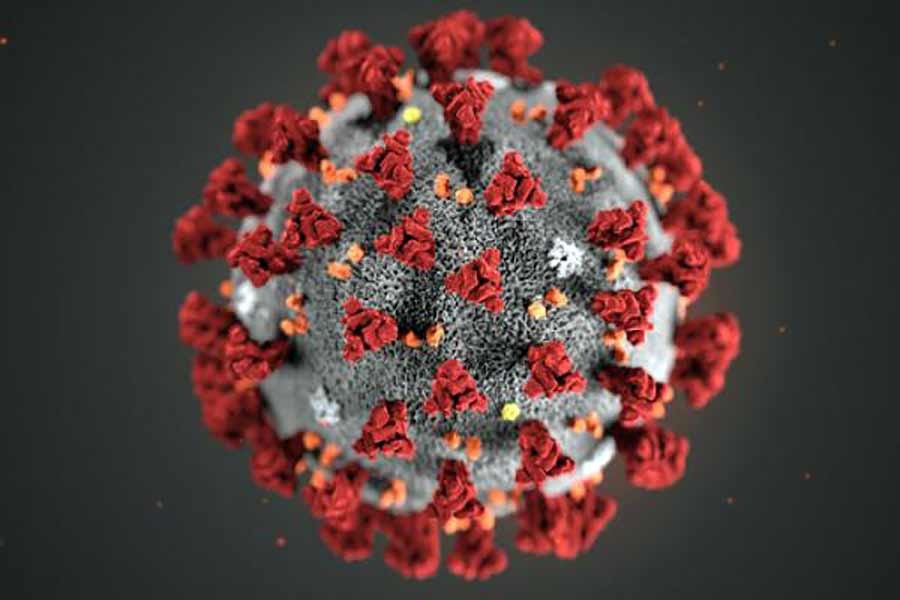During the last one month, the Covid situation has shown marked improvement with infection rate falling by 72 per cent and death by 70 per cent. The infection rate with attendant deaths were the highest in July and it has gradually tapered off. However, the first week of August saw the highest number of deaths at 726. Thankfully, the weekly infection and fatality rates have registered a sharp decline since. In the past week, the positivity rate has fallen below 2.0 per cent. During the 24-hoour period till Wednesday, the infection rate was 1.53 per cent, which is still below 2.0 per cent with the overall infection rate in the country standing at 15.26 per cent. Such a low infection rate was first noticed in April 2020, about one month and a half after the Covid-19 disease first struck the country last year.
Admittedly, the fall in the Covid positivity and fatality rates has brought life back to normal. Business has also bounced back. However, all this also entails a huge risk of being complacent. But there is little room for complacency as the Coronavirus may stage a comeback even after dropping to a zero positivity rate. So, there is no question of being off guard under any circumstances. In fact, according the World Health Organisation (WHO) there has been a 7.0 per cent rise in new Covid-19 cases across Europe as reported in the middle of this month. In Britain and Russia, for example, the rate of increase for new cases was 15 per cent. This is the only region in the world where the pandemic has shown a rising trend and WHO thinks uneven uptake of the vaccine is the real danger facing the continent. The issue of uneven vaccination from country to country is not just a problem within the European region as WHO pointed out. It is also a case with the South Asian region of which Bangladesh is a part. As such, Bangladesh, despite its envious record at fighting the pandemic, may get caught up to its detriment in the regional asymmetry in vaccination. Worse yet, there can be such uneven distribution of the jabs even within a country given the uncertainties in the supply of the serum from its producers in Europe and North America. This calls for proceeding with due caution also in our case here in Bangladesh. In truth, sudden disruption in the vaccination programme can always destroy the gains achieved. In any case, Bangladesh needs to take serious note of WHO's observation about the vaccination situation in Europe.
But uneven rate of vaccination or global vaccine inequity or politics apart, the danger of still newer strains of the sars-cov-2 with higher transmutability or other harmful features popping up any time cannot be dismissed out of hand. Not unexpectedly, as any virus is in the habit of endless mutations, a new variant of the Delta, named Delta plus, has been identified by UK scientists. This new Delta variant, in scientific jargon also termed AY.4.2, accounts for 6.0 per cent of all the Delta cases in Britain. Notably, Delta is the dominant variant of the Covid-19 in Britain as well as across the globe. How concerning is the Delta plus? It is still, in scientific phraseology, a 'variant under investigation'. That means it may turn into a 'variant of concern' in the epidemiological sense of the term. A variant of concern, or VOC, is one that has clinical or public health significance regarding its transmissibility, severity, vaccine effectiveness and response to diagnostic testing. So, the Delta plus, though not yet concerning, have the potential to be so with consequences we do not know. However, experts would like to assure the public that the 'Delta plus' is perhaps not a cause for alarm and that the vaccines now in use would work well to protect us against it. One would like to believe the experts. But then, what is exactly the 'Delta plus'? How does it look like? This new variant, AY.4.2, has undergone two mutations in the virus's spike protein. The spikes on the corona virus, as everyone is already familiar with from its picture printed regularly in the media during Covid infection updates, is the spear that the virus uses to penetrate its victim's cells. From evidences so far gathered, the Delta plus is 15 per cent more transmissible than the original Delta variant the world at the moment is grappling with. However, experts hold that it (Delta plus) is marginally a more infectious strain. However, the strains like the Alpha, or the Delta, that came in succession to invade the world have been 50 to 60 times more transmissible. In view of WHO experts, AY.4.2 is just one of the 20 variations of the Delta variant now under study and has not been looked upon as a threat either in the UK or the USA.
Be that as it may, Bangladesh should constantly be on guard to fight off any new harmful variant of coronavirus that may appear any time from nowhere.


